- Membership & Community
-
Publications & News
- Physiology Journals
-
Newsroom
-
The Physiologist Magazine
- 2019
- 2020
- 2021
- 2022
- 2023
- 2024
-
In Depth
- In Depth—The Bear Necessities
- In Depth: Understanding Circadian Rhythms
- In Depth: Understanding Data
- In Depth: Exercise Physiology: Take Your Medicine at the Gym
- In Depth: Neurodegenerative Disorders
- Imaging Methods Unveil the Invisible
- Rewiring the Brain: Breakthroughs in Neural Therapy
- What’s Coming Next for GLP-1 and Metabolic Disease Treatment
- Understanding the Effects of Maternal Exercise
- How Muscles May Hold Cues to Better Sleep
- The Science Behind Breathwork and Mental Health
-
Mentoring Forum
- Net Worth
- Take Care
- You … In Charge
- Work. It. Out.
- Working Off-site
- Location, Location, Location?
- Student Support
- Progressing to Postdoc
- Relationship Building
- Let’s Get It Started
- What Do We Value?
- It’s a Postdoc Life
- Coronavirus Contributions
- Creative Communications
- Selection Process
- Conference Connections
- Postdoc Appreciation
- Research Rewards
- Focus on Teaching
- Industry Insights
- Balance Beam
- Post Postdoc
- If You Build It
- Talk It Through
- Forward Bound
- I’ve Earned My PhD. Now What?
- University Life
- Tips for Trainees
- Time Travel
- Prepare Now for the Career You Want
- Landing a Postdoctoral Researcher Position
- Becoming a Physician-Scientist
- Mastering the Art of Science Communication
- Setting Yourself Up for Success in the Lab
- From Postdoc to Professor: Key Strategies for Success
- How to Stay Motivated in Challenging Times
- Staying Motivated Throughout Your Science Career
- Managing Stress and Workload During Your PhD
- Stay Passionate About Your Physiology Career
-
Policy IQ
- Policy IQ—2023 in Review: How APS Advocated on Behalf of Physiologists
- Policy IQ—Supporting Equitable Research
- NIH's Road Map to a Better Postdoc Experience
- The Career Path to Science Advocacy
- Culture of Safety: Stopping Sexual Misconduct
- Physiologists Return to Capitol Hill
- Tips for Scientists to Communicate about Animal Research
- Science Advocacy in a New Political Landscape
- Tips for Making the Call to Congress
- Science Spending Is an Investment
- Advocacy Up Close and Personal
- How Animal Research Advances Physiology and Medicine
-
Publish with Polish
- Publish with Polish
- The Layers of Open Science
- Take Your Content From Meeting to Manuscript
- APS Journals to Highlight Women’s Health Research
- What Subscribe to Open Means for APS Members
- The 5 Pillars of Publish with Purpose
- 3 Types of Metadata Researchers Should Know About
- Navigating Open Access and New Licensing Options
- Journal Manuscript Prep Made Easy
- How to Navigate Public Access Requirements
- Ensuring Public Trust in Publishing
- Improve Your Scientific Figures With APS and BioRender
-
Under the Microscope
- Equine Inspiration
- Inquiring Minds
- The Power of Teaching
- The Love of Physiology
- Understanding Women's Physiology Across the Lifespan
- Studying Human Health in Extreme Environments
- Advancing Kidney Health and Physiology Research
- How Gut Microbes Shape Blood Pressure and Drug Response
- Battling Malaria
- Exploring the Microbiome
- From Physics to Physiology: A Scientist's Unconventional Journey
- Mentoring Q&A
- Evolution
- Baseline by Scott Steen, CAE, FASAE
- 2025
- Find Us on Social Media
-
The Physiologist Magazine
-
Professional Development
-
Meetings & Events
-
American Physiology Summit
- #APS2024 Overview
- Abstracts
- Awards at the Summit
- Award Lectures
- Career Networking Lunch Form
- Dates and Deadlines
- Advocate for Health Research Funding
- Hotel Information
- International Travel Information for Summit Attendees
- Industry Partners
- Mobile App
- NIH and NSF Program Officer Panel Discussion Form
- Physical Poster Information
- American Physiology Summit PhysioHub
- Pre-Summit Events
- Registration
- Section & Group Banquet Tickets
- Social Events
- Speaker Audiovisual Instructions
- Summit FAQs
- Travel & Transportation
- Undergraduate Program Book
- Liability Waiver
- Industry Partners
- Joseph Erlanger: Pioneering Nerve Research and APS Leadership
- 2023
- 2024
- Scientific Integrity Policy
- Exhibitor Registration Form
- Keynote Speaker Tracy L. Bale, PhD
- Keynote Speaker Jennifer Lippincott-Schwartz, PhD
- Career Day Workshop: Own Your Path, Positioning for the Career That Fits You
- From Concept to Classroom
- New Trends in Sex Differences and Women’s Health Research
- Control of Renal Function in Health and Disease
- Comparative Physiology Conference
- Webinars
- Future APS Conferences
- Conference Policies
-
American Physiology Summit
- APS Awards
-
Career & Professional Development
-
Career Gateway
-
Resources
- Transcript—Leading Through Conflict and Difficult Conversations
- Transcript—Managing Conflict with Colleagues
- Transcript—Leading a Team Through Conflict
- Transcript—Providing Difficult Feedback
- Transcript—Team Dynamics and Culture Primer
- Transcript—Building a Team
- Transcript—Leading a Team Assigned to You
- Transcript—Creating a Team Culture
-
Resources
- Career Navigator
- Center for Physiology Education
- Virtual Courses
- Physiology Job Board
- APS Graduate Physiology & Biomedical Science Catalog
-
Career Gateway
-
Meetings & Events
-
Advocacy & Resources
- Science Policy
-
Resources
- Researcher Resources
- Educator Resources
- Trainee Resources
- Student Resources
-
APS Graduate Physiology & Biomedical Science Catalog
- Des Moines University
- George Washington University
- Michigan State University
- New York Medical College
- Nova Southeastern University
- Pennsylvania State University
- Texas A&M University
- Texas A&M University Medical Physiology
- Stony Brook University
- University of Alabama at Birmingham
- University at Buffalo
- University of Colorado
- University of Michigan
- University of Minnesota
- University of Missouri-Biomedical Sciences
- University of Nebraska Medical Center
- University of Nevada, Reno
- University of South Carolina School of Medicine
- University of Tennessee Health Science Center (UTHSC)
- University of Texas Health Science Center
- Virginia Commonwealth University
- Wayne State University
- Physiology Department Catalog Submission Form
- Boston University
- Career Gateway
- Major Initiatives
- About APS
In 1887, twenty-eight doctors and scientists founded the American Physiological Society to promote the advancement of physiology and facilitate interaction among American physiologists. At the time, only a handful of physiological laboratories existed in the U.S. and few investigators. The organizational meeting of the Society was held on December 30, 1887, at Columbia University with seventeen people in attendance.
Of the twenty-eight charter members, five men are considered the founders of the Society. Three of them, Henry Pickering Bowditch, S. Weir Mitchell, and Henry Newell Martin, were signers of the original letter of invitation to attend the organizational meeting. Two others, Russell H. Chittenden and John Green Curtis, played such prominent roles in the founding and early history of the Society that they too have been honored as founders.
Henry Pickering Bowditch (1840-1911)
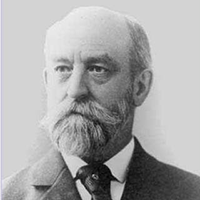 Henry Pickering Bowditch was chosen the first President of APS at the organizational meeting in 1887. He served in 1888 and again from 1891 to 1895, a total of six years. A graduate of Harvard Medical School, Bowditch studied physiology with Barnard
in France and Ludwig in Germany. Appointed assistant professor of physiology at Harvard Medical School in 1871, he established the first university laboratory of experimental physiology in America. Several of the charter members of APS, among them
F. W. Ellis, G. S. Hall, W.P. Lombard, C. S. Minot, I. Ott, and J. W. Warren, had worked with him in his laboratory. His research touched on a wide variety of subjects including the indefatigability of nerves, the function of cardiac muscle, ciliary
motion, the knee-jerk response, and the growth of children.
Henry Pickering Bowditch was chosen the first President of APS at the organizational meeting in 1887. He served in 1888 and again from 1891 to 1895, a total of six years. A graduate of Harvard Medical School, Bowditch studied physiology with Barnard
in France and Ludwig in Germany. Appointed assistant professor of physiology at Harvard Medical School in 1871, he established the first university laboratory of experimental physiology in America. Several of the charter members of APS, among them
F. W. Ellis, G. S. Hall, W.P. Lombard, C. S. Minot, I. Ott, and J. W. Warren, had worked with him in his laboratory. His research touched on a wide variety of subjects including the indefatigability of nerves, the function of cardiac muscle, ciliary
motion, the knee-jerk response, and the growth of children.
Silas Weir Mitchell (1829-1914)
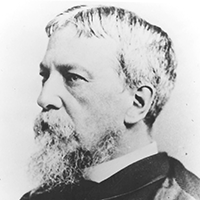 S. Weir Mitchell, the eldest and most distinguished at the time of the three signers of the letters of invitation to join APS, presided over the organizational meeting of December 30, 1887. It was said that he initiated the idea of forming the Society.
He would no doubt have been elected first president had he not taken himself out of the running. He served instead as second president of APS for two years, 1889 and 1890. A graduate of Jefferson Medical College, Mitchell studied physiology in Paris
with Claude Bernard. Unable to obtain a post as professor of physiology, he set up a private physiological laboratory in Philadelphia and became the outstanding American physiologist in the period before the establishment of university laboratories.
His experimental work dealt with such topics as snake venom, the function of the cerebellum, the knee jerk, and the physiology and pathology of nerves.
S. Weir Mitchell, the eldest and most distinguished at the time of the three signers of the letters of invitation to join APS, presided over the organizational meeting of December 30, 1887. It was said that he initiated the idea of forming the Society.
He would no doubt have been elected first president had he not taken himself out of the running. He served instead as second president of APS for two years, 1889 and 1890. A graduate of Jefferson Medical College, Mitchell studied physiology in Paris
with Claude Bernard. Unable to obtain a post as professor of physiology, he set up a private physiological laboratory in Philadelphia and became the outstanding American physiologist in the period before the establishment of university laboratories.
His experimental work dealt with such topics as snake venom, the function of the cerebellum, the knee jerk, and the physiology and pathology of nerves.
Henry Newell Martin (1848-1896)
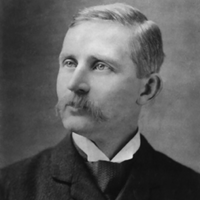 H. Newell Martin was the first secretary-treasurer of APS, serving from the organizational meeting in 1887 through 1892. It was because of Martin's foresight that the APS now has records that go back to the very beginning of the Society. Born in
Ireland, Martin received a medical degree at the University of London and was a student of Michael Foster at Cambridge University. On the strong recommendation of Thomas Henry Huxley, Daniel Coit Gilman, President of the newly founded Johns Hopkins
University, chose Martin in 1876 to head the Department of Biology. Martin set up a physiological laboratory and trained six of the charter members of APS. As an investigator, he is best known for his preparation of the isolated mammalian heart.
H. Newell Martin was the first secretary-treasurer of APS, serving from the organizational meeting in 1887 through 1892. It was because of Martin's foresight that the APS now has records that go back to the very beginning of the Society. Born in
Ireland, Martin received a medical degree at the University of London and was a student of Michael Foster at Cambridge University. On the strong recommendation of Thomas Henry Huxley, Daniel Coit Gilman, President of the newly founded Johns Hopkins
University, chose Martin in 1876 to head the Department of Biology. Martin set up a physiological laboratory and trained six of the charter members of APS. As an investigator, he is best known for his preparation of the isolated mammalian heart.
John Green Curtis (1844-1913)
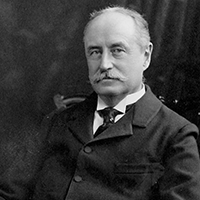 The organizational meeting of APS was held in John G. Curtis's physiological laboratory at Columbia. Curtis was on the first Council of the Society and remained an active member. While not a major investigator himself, he did much to stimulate physiological
research and teaching in America. After taking his MD at the College of Physicians and Surgeons, Curtis began medical practice but was drawn into physiological research by John Call Dalton, professor of physiology at Columbia. In 1883 when Dalton
became dean of the medical school, Curtis succeeded him in the Department of Physiology. Curtis and Mitchell were the earliest members of the Society to take an active interest in the history of physiology. Curtis's enthusiasm for collecting and studying
the works of great masters of physiology led him to write Harvey's Views on the Circulation of the Blood published posthumously in 1915.
The organizational meeting of APS was held in John G. Curtis's physiological laboratory at Columbia. Curtis was on the first Council of the Society and remained an active member. While not a major investigator himself, he did much to stimulate physiological
research and teaching in America. After taking his MD at the College of Physicians and Surgeons, Curtis began medical practice but was drawn into physiological research by John Call Dalton, professor of physiology at Columbia. In 1883 when Dalton
became dean of the medical school, Curtis succeeded him in the Department of Physiology. Curtis and Mitchell were the earliest members of the Society to take an active interest in the history of physiology. Curtis's enthusiasm for collecting and studying
the works of great masters of physiology led him to write Harvey's Views on the Circulation of the Blood published posthumously in 1915.
Russell Henry Chittenden (1856-1943)
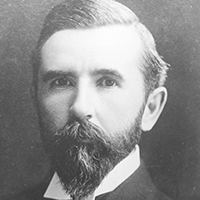 Russell H. Chittenden has the distinction of serving as the Society's president for the longest period of time, from 1896 through 1904, a total of nine years. Unlike the other founders, Chittenden did not have a medical degree. Trained in agricultural
chemistry at the Sheffield Scientific School, Yale, he studied biochemistry and physiology in Germany. In 1882 he established at the Sheffield Scientific School the first laboratory of "physiological chemistry" (biochemistry) in America and did pioneer
work in the chemistry of nutrition and digestion. His laboratory trained many early members of APS and was responsible for a good portion of the papers published in the early volumes of the American Journal of Physiology.
Russell H. Chittenden has the distinction of serving as the Society's president for the longest period of time, from 1896 through 1904, a total of nine years. Unlike the other founders, Chittenden did not have a medical degree. Trained in agricultural
chemistry at the Sheffield Scientific School, Yale, he studied biochemistry and physiology in Germany. In 1882 he established at the Sheffield Scientific School the first laboratory of "physiological chemistry" (biochemistry) in America and did pioneer
work in the chemistry of nutrition and digestion. His laboratory trained many early members of APS and was responsible for a good portion of the papers published in the early volumes of the American Journal of Physiology.

